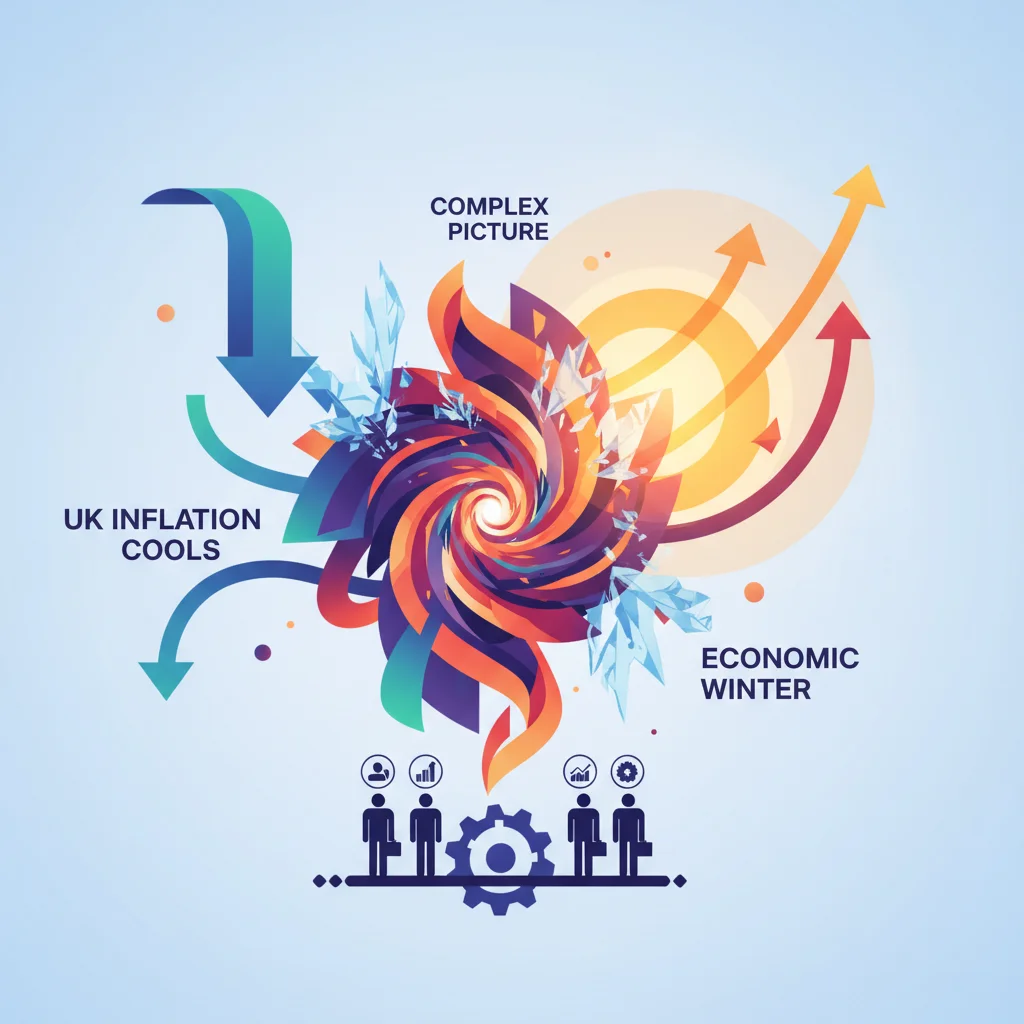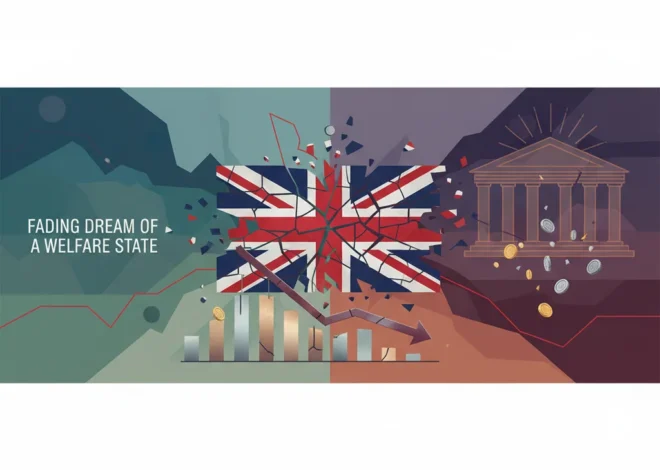
UK Inflation Cools, But Is the Economic Winter Over? A Deep Dive for Investors and Leaders
A Glimmer of Hope: UK Inflation Dips, But a Complex Picture Emerges
In a much-anticipated development for the UK economy, the latest figures reveal a significant slowdown in the rate of price increases. The Consumer Prices Index (CPI) has fallen to its lowest level in four months, a sign that the relentless pressure on household and business finances may be starting to ease. According to a report from the BBC, this deceleration in the headline inflation rate offers a welcome respite after a prolonged period of economic strain. However, a deeper analysis of the data reveals a more nuanced and challenging reality, particularly as stubborn food prices continue to “buck the trend.”
This development places the Bank of England at a critical juncture, forcing a re-evaluation of its monetary policy. For investors navigating the volatile **stock market**, business leaders formulating strategy, and individuals managing their personal **finance**, understanding the cross-currents within these numbers is paramount. Is this the definitive turning point in the battle against inflation, or merely a temporary lull before the next storm? This article will dissect the latest figures, explore the wide-ranging implications, and provide an expert perspective on what lies ahead for the UK’s financial landscape.
Deconstructing the Data: What’s Driving the Headline Drop?
The headline inflation figure, while encouraging, is a composite of various sectors moving at different speeds. The primary driver behind the recent slowdown has been the significant drop in energy prices compared to their peak last year. This “base effect” means that even if prices remain high, the rate of increase over the past twelve months has slowed considerably. However, the persistence of high food and services inflation remains a major concern for economists and policymakers.
To better understand the forces at play, let’s examine a breakdown of the key components contributing to the overall inflation rate. This granular view is essential for anyone involved in **investing** or strategic financial planning.
Below is a comparative look at the key inflation components, illustrating the divergent trends within the UK economy.
| Inflation Category | Recent Trend | Key Drivers & Implications |
|---|---|---|
| Overall CPI | Decelerating (Lowest in 4 months (source)) | Mainly driven by falling energy costs. Provides headline relief but masks underlying issues. |
| Food & Non-Alcoholic Beverages | High & Persistent | Supply chain issues, labour costs, and global commodity prices keep pressure on household budgets. A key area of concern. |
| Energy (Gas & Electricity) | Sharply Decreasing | Reflects the drop from last year’s price cap peak. This is the biggest contributor to the headline CPI fall. |
| Services Inflation | Elevated & “Sticky” | Driven by strong wage growth. Closely watched by the Bank of England as an indicator of domestic inflationary pressure. |
| Core Inflation (Excl. food & energy) | Slowing, but still high | Offers a clearer view of underlying inflation. Its persistence suggests the fight is not yet over. |
This divergence highlights the central challenge for the UK’s central **banking** authority. While the fall in energy prices is a positive external factor, the stickiness of domestically-generated inflation, particularly in the services sector, complicates the path forward for interest rate decisions. Businesses, especially in hospitality and other service-based industries, continue to face rising wage bills, which they often pass on to consumers.
The Great Legal Shake-Up: Is Private Equity About to Buy into Big Law?
The Ripple Effect: What This Means for Your Wallet, Portfolio, and Business
The latest inflation data is not just an abstract economic indicator; it has tangible consequences for every participant in the economy. From mortgage rates to stock valuations, the ripple effects are far-reaching.
For Households and Savers
A lower inflation rate is unequivocally good news for household budgets, as it means the purchasing power of their earnings erodes more slowly. However, with food prices remaining stubbornly high, many families will not yet feel this relief in their weekly grocery shop. For savers, while the real return on their cash is improving, interest rates offered by **banking** institutions may soon peak if the Bank of England pauses its rate-hiking cycle. Mortgage holders on variable rates may see some stability, but those looking to remortgage still face significantly higher costs than two years ago.
For Investors and the Stock Market
The **stock market** often reacts positively to news of falling inflation, as it can signal a less aggressive stance from the central bank. This environment can be beneficial for growth stocks, particularly in the technology and **fintech** sectors, which are sensitive to interest rate expectations. However, the outlook is not uniform.
- Consumer Discretionary: Companies selling non-essential goods (e.g., retail, travel) may benefit if households feel more financially secure.
- Consumer Staples: Firms selling essentials (e.g., food producers, utilities) have shown strong pricing power but may see that wane as inflation cools.
- Financials: Banks have benefited from higher interest margins, but a peak in rates could temper their earnings growth.
Sophisticated **trading** strategies will involve carefully monitoring sector-specific data rather than just the headline CPI. The divergence between goods and services inflation will create distinct winners and losers.
For Business Leaders
For businesses, the picture is mixed. Slowing inflation can ease the pressure from input costs, but it also reduces their ability to raise prices. The key challenge remains the tight labour market and persistent wage growth, which squeezes profit margins, especially in service-oriented industries. Strategic decisions around investment, hiring, and pricing will need to account for a complex environment where headline inflation is falling but core costs remain high. The adoption of **financial technology** to improve efficiency and manage costs becomes even more critical in this climate.
The Bigger Picture: Global Context and Technological Levers
The UK’s inflation battle is not happening in a vacuum. Most major Western economies are facing similar, albeit distinct, challenges. The US Federal Reserve and the European Central Bank are also grappling with how to bring inflation to heel without triggering a deep recession. The UK’s higher services inflation rate, however, remains a point of difference and concern for international investors (source).
In this complex macroeconomic landscape, technology continues to be a powerful deflationary force. The ongoing revolution in **fintech** is providing businesses with tools to streamline payments, manage cash flow more effectively, and reduce administrative overhead. On a grander scale, emerging technologies like **blockchain** offer the potential for more transparent and efficient supply chains. By creating an immutable ledger for tracking goods from farm to shelf, blockchain could help reduce the inefficiencies and information gaps that contribute to price volatility in sectors like food production.
Navigating the Path Forward: An Outlook for the UK Economy
Looking ahead, the path for the UK **economy** is likely to be a gradual and uneven grind towards the Bank of England’s 2% inflation target. While the headline rate is expected to continue its downward trend into the new year, several risks remain on the horizon. Geopolitical instability could trigger another energy price shock, and a persistently tight labour market could keep domestic inflation elevated for longer than anticipated.
The key takeaways for stakeholders are clear:
- For Investors: Focus on company fundamentals and pricing power. A cooling inflation environment requires a shift in strategy from simply riding the inflationary wave to identifying resilient businesses that can thrive in a slower-growth world.
- For Business Leaders: Prioritize efficiency and technology adoption. Use this period to invest in systems that can protect margins and enhance productivity as pricing power diminishes.
- For Individuals: Continue to manage budgets prudently, particularly for non-discretionary items like food. Seize the opportunity to lock in higher savings rates before they begin to fall.
The recent inflation figures are a step in the right direction, but the journey towards sustainable economic stability is far from over. The interplay between global trends, domestic pressures, and central bank policy will define the financial landscape for months to come, demanding vigilance and adaptability from all.


